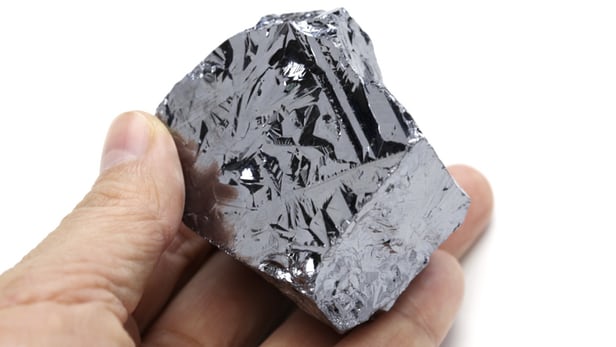Abundant silicon at the heart of cheaper renewable energy storage system

As one of the Earth's crust's most abundant elements, silicon could form the basis of a cheaper storage system for renewable energy(Credit: asimojet/Depositphotos)
A team of researchers from Madrid is developing a thermal energy storage system that uses molten silicon to store up to 10 times more energy than existing thermal storage options. The hope is to develop the technology into a new generation of low-cost solar thermal stations to store solar energy in urban centers.
Storage is the current major challenge faced by renewable energy sources like wind and solar – so if these are to become viable alternatives, drastic improvements to our ability to store surplus energy are required so that cities can draw on that energy at night, and at other times when the sun isn't shining or the wind isn't blowing.
Current battery technology just isn't developed enough yet, so researchers across the industry have been exploring a range of new ideas to improve energy storage, including a commercialized solar thermal energy system that stores concentrated heat from the sun in the form of molten salts (potassium/calcium/sodium nitrates etc.), and converts the heat back to electricity via a thermal generator.
Salt-based systems work quite well, but they require complex pumps, pipelines and heat transfer fluids to generate electricity, making them expensive and vulnerable to safety issues. They're also not based on particularly abundant materials – if we scale up the use of these plants, we could find ourselves running low on the elements needed to make these salts within a few decades. That's why researchers worldwide are looking for safer alternatives that use cheaper and more abundant materials.
The silicon-based solution proposed by the team from the Universidad Polytechnic de Madrid (UPM) could be a winner because silicon is one of the world's cheapest and most abundant elements – second only to oxygen.
The proposed new thermal energy storage system involves heating the silicon in a container using either concentrated sunlight on surplus electricity generated by renewable power. The molten silicon – which can reach temperatures of around 1,400° C (2,552° F) – can be isolated from its environment until energy is needed, at which point the heat is converted to electricity. Silicon's unique properties allow it to store more than 1 MWh of energy in a cubic meter – ten times more energy than salts.
The key to making the new system work, according to research leader Alejandro Datas, is the use of thermophotovoltaic cells – a fairly new technology that sees solar panels generating electricity from heat as well as light.
"At such high temperatures, silicon intensely shines in the same way that the Sun does," says Datas. "Thus thermophotovoltaics can be used to convert this incandescent radiation into electricity."
Thermophotovoltaic cells can reach conversion efficiencies of over 50 percent and can produce 100 times more electrical power per unit area than conventional solar cells. Datas says they are key to the system – not least because they can work at extreme temperatures, unlike other generators.
The system certainly sounds like it ticks a lot of boxes: it uses abundant, inexpensive materials, is able to store up to 10 times more energy than existing solutions and is extremely compact and quiet, with no moving parts.
The researchers believe their invention could dramatically reduce the cost of storing and producing energy in the thermal energy sector. It could also offer a safe, cost-effective answer to the renewable sector's energy storage woes, and could be used for heating as well is electricity.
The UPM team is now looking to commercialize the system. Towards that end, they have founded a business project called SILSTORE and have started building a laboratory-scale prototype.
You can read a paper about the system in the journal Energy.
Source: UPM
